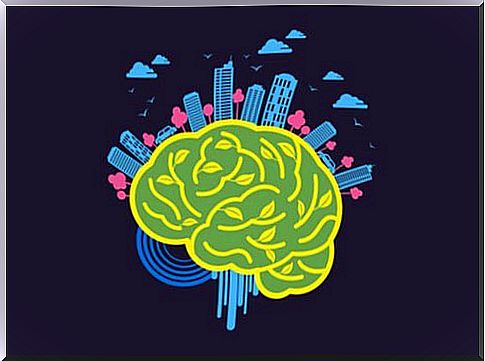Neuro-architecture: The Impact Of The Environment On The Brain

The neuro-architecture is a discipline that investigates how the environment changes the brains and our behavior. In this article we will tell you the most important architectural elements that influence our mental state.
Perhaps neuro-architecture seems like a new field. Actually, however, it is almost 70 years old. The aim is to create spaces of happiness, well-being and productivity. In other words, it aims to create buildings that reduce stress and anxiety.
Architects and neuroscientists work together in this field. The aim is to design spaces and buildings aimed at providing optimal conditions for the people who occupy them.
This scientific partnership is based on several architectural components. For example, it considers the location of the windows, the angles for the walls and the furniture, the colors, the textures, open spaces and sounds, among many other aspects.
What is neuro-architecture?
This discipline helps to create buildings that influence the functioning of the brain. With this in mind, you could say that this field goes back to the first Gothic buildings. As a science, however, it is much younger than that. In fact, you can say that neuro-architecture first emerged about 25 years ago.
Neuro-architecture is a field that is interested in how the environment changes brain chemistry and emotions, thoughts and behaviors.
dr. Fred Gage is a neuroscientist at the Salk Institute for Biological Studies. He was interested in the effects of environmental changes on the brain. Gage focuses on understanding the way the brain interprets, dissects and rebuilds the space that surrounds it.
Neuroscience thus provides valuable clues that architects can use to create and organize spaces. Certain environments cause the brain to trigger mechanisms that produce the necessary hormones for the development of certain emotions and sensations.

The psychosocial influence of architecture
It is estimated that people spend more than 90% of their time in buildings. We now also know that the environment has an impact on the brain. It is therefore important that we build more humane and healthier buildings that provide well-being. Neuro-architecture focuses on both the aesthetic and the symbolic aspects.
This neuroscience can map the brain. It also provides an insight into what stimulates the brain and what kinds of things activate the brain. With this in mind, neuro-architecture works with concepts such as the amount of light and the projection of the light or with the height of the ceilings.
This discipline knows how to influence creativity and productivity. It also takes into account which architectural elements can bring about a collaborative effect or a need for privacy in the brain.
The neuro-architecture and the different elements
We already know that various architectural elements influence our mental state. For example, what we know is that architectural designs with exposed or acute angles promote the occurrence of stress.
Rectangular spaces make people feel enclosed. Lighting is another important element. Bad artificial light forces the brain to work harder. This affects productivity.
High ceilings are suitable for creative and artistic activities. On the other hand, low ceilings promote concentration and routine work. Colors can affect mood. This means that they have an influence on decision-making and attitude.
For example, greenish colors lower the heart rate and relieve stress. On the other hand, red stimulates the cognitive and attention processes. For that reason, shades of red are a great aid for tasks that require mental concentration.

Symbiosis with nature
In recent years, neuro-architecture has begun to realize how important open-air spaces and nature are for the proper functioning of the brain.
They are as fundamental as recharging a battery in electronic devices. Nature gives the brain the ability to disconnect and recharge.
When it comes to loosening up, there is another important element which is the auditory cortex. This brain region is responsible for the interpretation of sound vibrations.
We know that it releases an extra dose of dopamine if the person activates this area with music he or she likes. Dopamine is the hormone that improves concentration during work.









